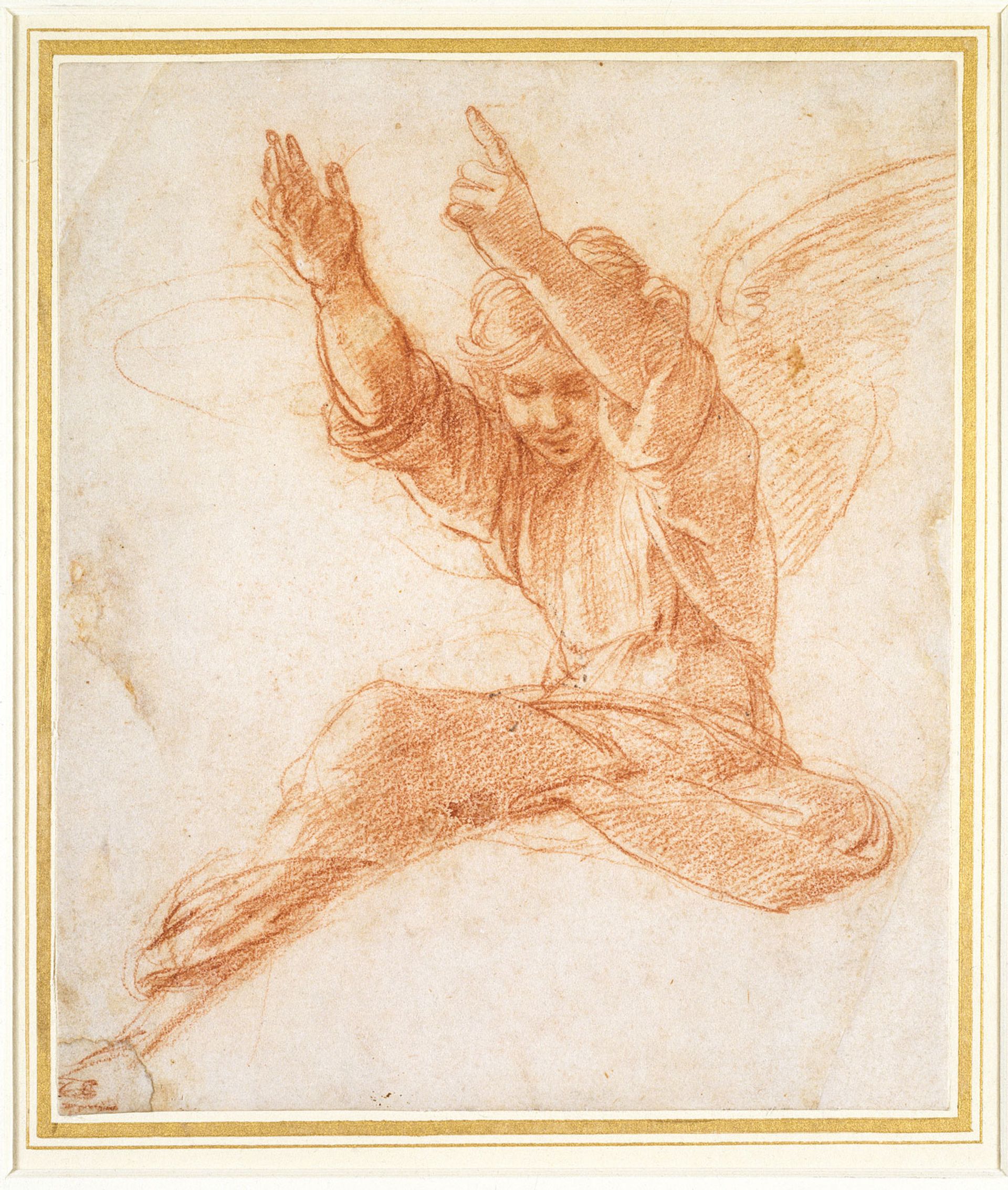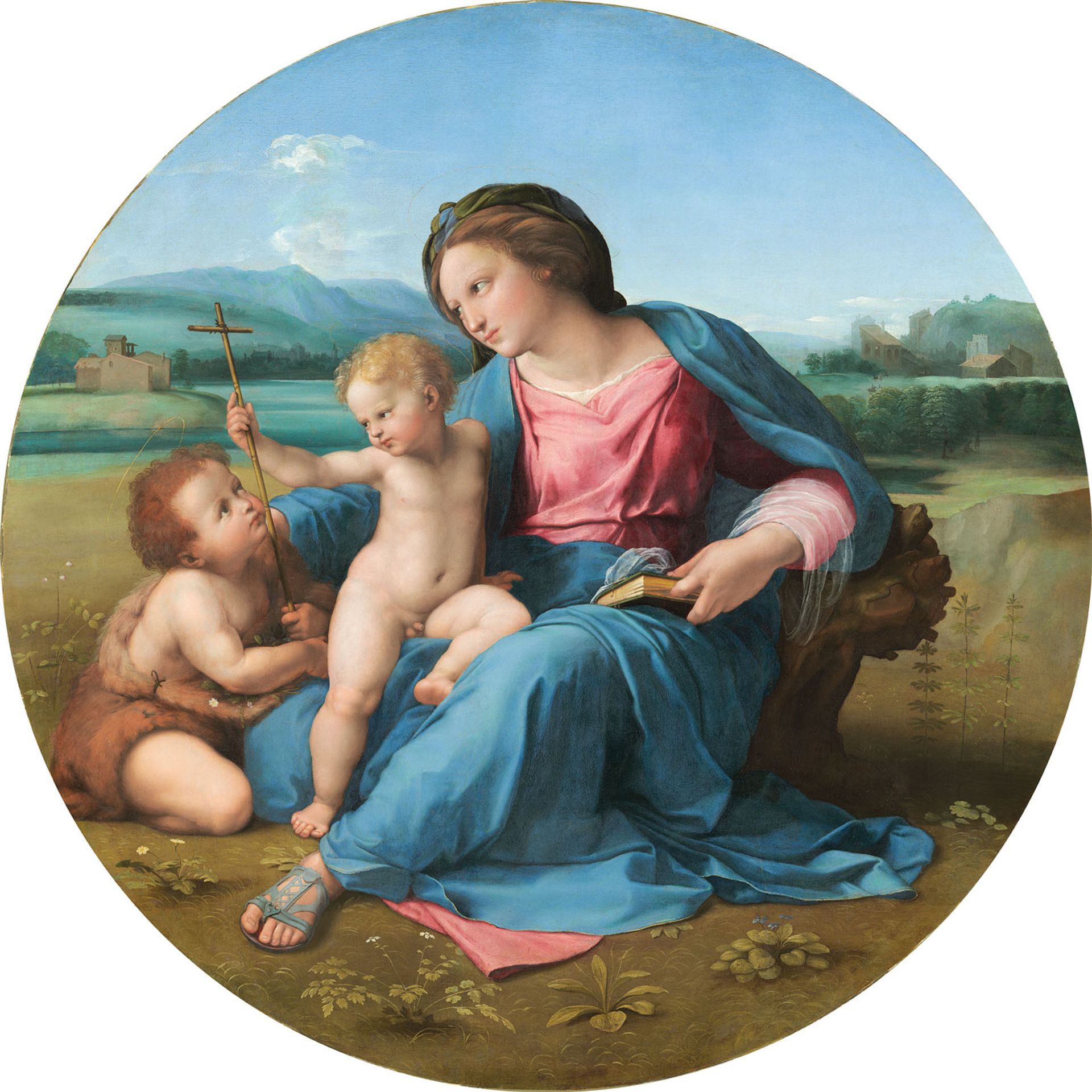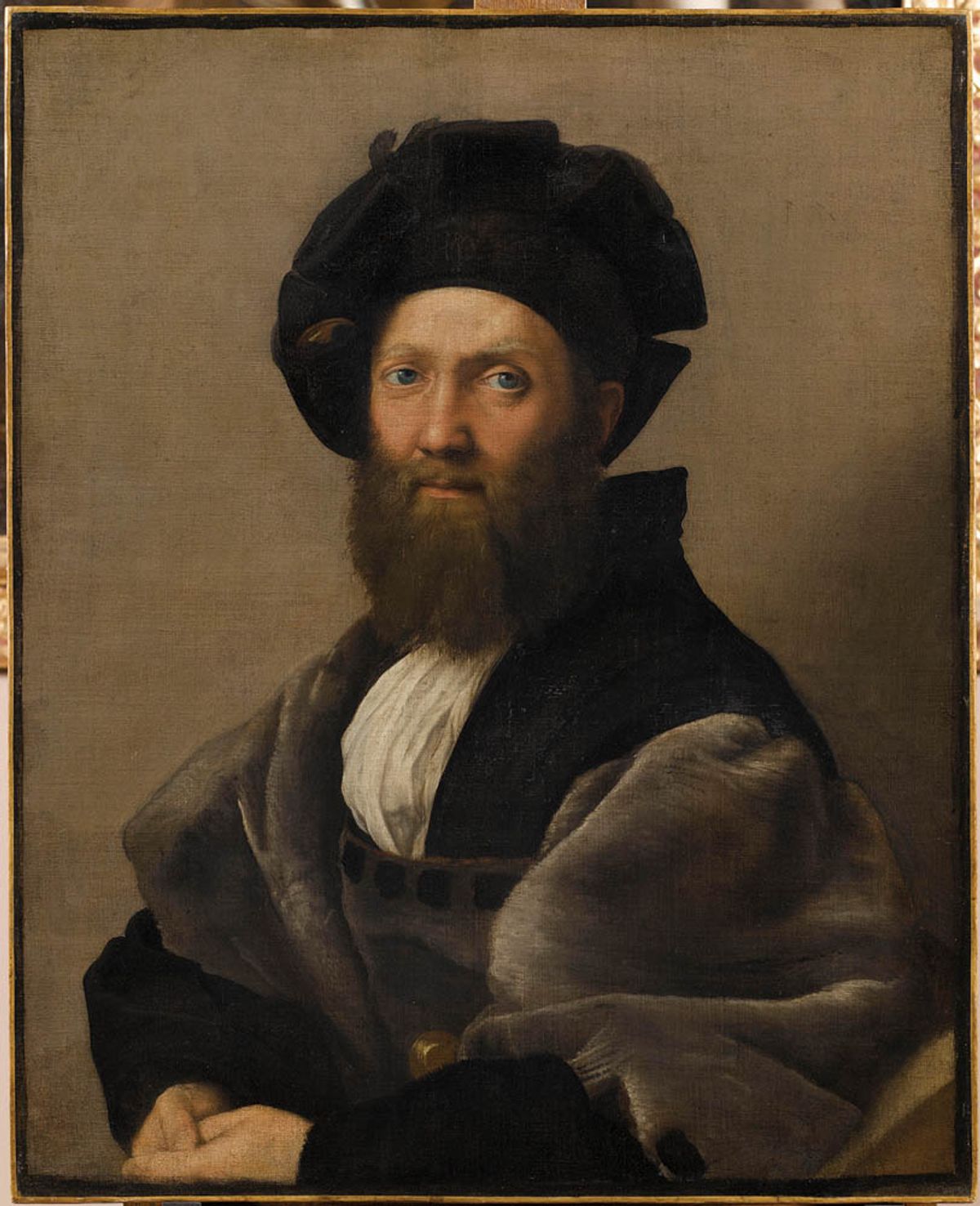Covid-19 laid waste to so much in 2020 that the cancellation of most exhibitions marking the 500th anniversary of Raphael’s death slipped by almost unnoticed. While the National Gallery postponed its celebration of the painter until now, the Scuderie del Quirinale in Rome braved the pandemic in 2020 with Raphael 1520-1483. As the title suggests, this turned Raphael’s career on its head beginning with his burial in Rome and then working backwards to his upbringing as the son of a court painter in Urbino.
While this reversal offered some fresh perspective to those broadly familiar with Raphael’s work, the curators of the National Gallery show, David Ekserdjian and Tom Henry, could not assume such familiarity and it will follow a traditional linear narrative. In fact, such is the simplicity of the exhibition’s concept that it would take the briefest of elevator rides for their curatorial pitch: to focus on Raphael’s life and career in 89 works by him or designed by him from the late 1490s to his death, aged just 37, in April 1520.
What set Raphael apart was his unerring eye for spotting the most talented artists and craftsmen to collaborate with
For a monographic show on Raphael, the exclusion of works by the likes of Perugino, Leonardo and others who shaped his style, or anything designed and executed entirely by his talented roster of pupils, is unusual. But that spotlight is entirely fitting for an individual whose precocious talent was harnessed to a fierce ambition that drove him to seek advancement in Umbria, Florence and eventually Rome where in less than five years he established himself (much to Michelangelo’s fury) as the city’s dominant artist.
The inclusion in the show of drawings for sculpture, decorative arts, tapestry, prints and architecture underline Raphael’s versatility, yet this was not uncommon among his contemporaries. What set Raphael apart was his unerring eye for spotting the most talented artists and craftsmen to collaborate with, and then pushing their creativity to new heights through the expressive power and intelligence of his designs. One example of his collaborative genius highlighted in the show is a series of four engravings made by the Bolognese printmaker Marcantonio Raimondi after Raphael drawings, one of which, for the Massacre of the Innocents, has been borrowed from the Albertina in Vienna. The curators cleverly demonstrate Raphael’s practical approach to designing that underpinned his productivity (a key asset in his ascendancy) by showing how the figure of the lunging soldier in the engraving evolved out of a slightly earlier drawing made in preparation for the Judgement of Solomon frescoed on the vault of the Stanza della Segnatura in the Vatican.

Raphael's red chalk drawing of an angel © Ashmolean Museum, University of Oxford
The show will have many such moments that provide a thrilling insight into how Raphael’s fizzing inventiveness was always rigorously channelled towards perfecting the multifarious commissions he juggled through harnessing the specialist talents of his well-organised studio. It was this discipline and clarity of thought, as well as a gift for delegation and organisation, that enabled Raphael to maintain the high quality of his varied output, whether in paint, wool or bronze.
Inevitably, the exhibition will rely heavily on Raphael’s studies to stand in for his immovable works, such as altarpieces still in situ and fresco cycles, but for anyone who struggles to see his allure, his creative genius is arguably most palpable and alive on paper. The taste for Raphael among British collectors in the 18th and 19th centuries means that the National Gallery curators had a core of superlative works to hand as a foundation for the show, not least from the museum’s own collection. But they have also been startlingly successful at winkling out works of equal quality from overseas: paintings such as La Madonna del Granduca (around 1506-07) and La Donna Velata (around 1512-15) from the Galleria degli c; the Alba Madonna (around 1510) and Bindo Altoviti (around 1515) from the National Gallery of Art in Washington, DC; the Santa Cecilia altarpiece (1518) from the Pinacoteca Nazionale, Bologna; La Fornarina (1518-19) from the Palazzo Barberini, Rome; and from the Musée du Louvre, two of his greatest portraits, Baldassare Castiglione (around 1514-15) and the so-called Raphael and his Fencing Master (1518-20).

Raphael's The Virgin and Child with the Infant Saint John the Baptist, also know as the Alba Madonna (around 1509-11) Courtesy of National Gallery of Art, Washington DC
The gathering together of so many masterpieces is reason enough to brave the crowds but the exhibition also features outstanding works that are much less well known, such as the study of Pope Leo X in coloured chalks from the Isabella Stewart Gardner Museum in Boston, or the two bronze roundels, perhaps made by Cesarino Rossetti. The show will also include works that only observers of the sale rooms would have seen of late: the oil Portrait of Lorenzo de’Medici sold by Christie’s in 2007; the miniature roundel painted portrait of the medallist and gem engraver Valerio Belli auctioned by Sotheby’s in 2016; and the leadpoint-and-white heightening study of the Holy Family with the Infant Baptist that was sold at auction in Paris in 2019 as “attributed to Giovanni Francesco Penni”.
Through concentrating exclusively on Raphael’s 20-year career, the National Gallery show makes the strongest possible case for seeing him with fresh eyes as a radical and relentlessly inventive artist. By doing so, it reminds us that Raphael was blameless for the elevation of his works to canonical status that led to so much sterility and dullness in the academic tradition of European art. And when seen without this baggage, his works pulsate with energy, acute observation, technical brilliance on paper and in paint, and are shot through with a humanity that animates his subjects whether in the tenderness of the Madonna towards her son, or the warm intimacy of friendship that pervades the portrait of Baldassare Castiglione. Even after 502 years, Raphael’s talent remains excitingly fresh and still very much worth celebrating.
• Raphael, National Gallery, London, 9 April-31 July


